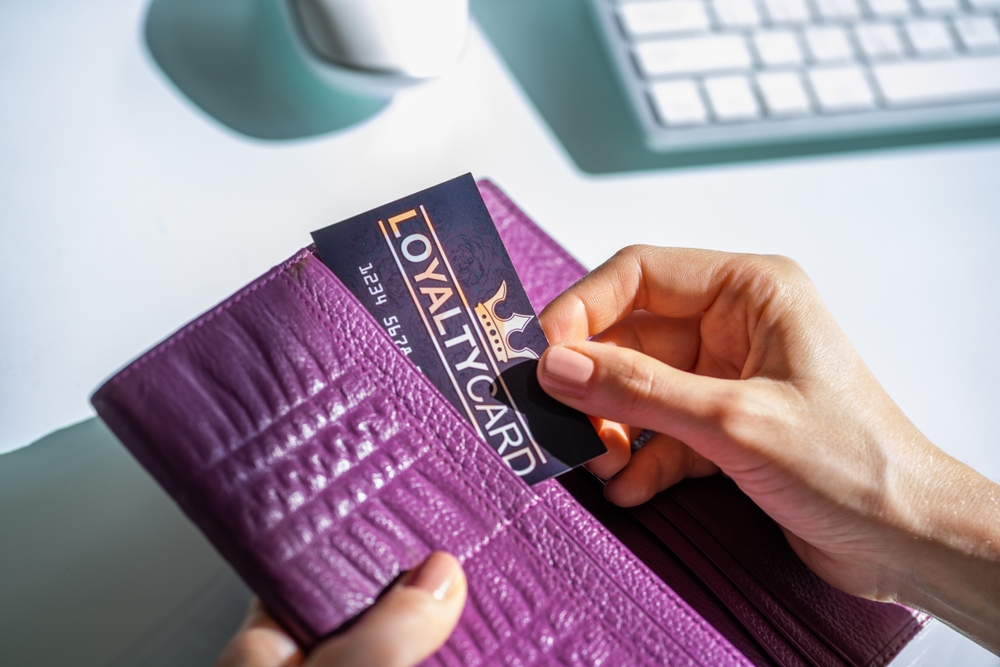In a world where luxury seems to be the norm, saving money might feel like a daunting task. But even the most glamorous of lifestyles can be accompanied by savvy spending habits that don’t leave you feeling deprived. Imagine having your designer cake and eating it too—without breaking the bank. Here are thirteen stylish ways to save money, keeping your budget chic and your life fabulous. With a fresh perspective and a little creativity, you can maintain financial wellness while still enjoying the finer things in life.
1. Create A Capsule Wardrobe

A capsule wardrobe is your best friend when it comes to both style and savings. By curating a collection of timeless and versatile pieces, you can mix and match to create countless outfits without the need for constant shopping. The concept is simple: high-quality basics that never go out of style. According to the New York Times, this streamlined approach not only saves time but also reduces the urge to splurge on fast fashion. Invest in classic pieces like a well-fitted blazer or a little black dress, and watch your wardrobe woes disappear.
With fewer items to choose from, decision fatigue becomes a thing of the past, allowing you to focus on what truly matters. Imagine waking up and knowing that whatever you choose to wear will look polished and put-together. Plus, with less clutter, you’ll find that your closet becomes more of a sanctuary than a source of stress. The beauty of a capsule wardrobe is that it simplifies your life, making your mornings smoother and your spending more intentional. Ultimately, it’s about quality over quantity, which is a mantra that can benefit many areas of life.
2. Dine In, But Make It an Experience

Who says staying in has to be boring? Transform your dining area into a private bistro, complete with mood lighting and a playlist of your favorite tunes. The secret is to embrace the experience by setting the table with care—break out the nice dishes and light a candle or two. When you view dining at home as an occasion, the allure of eating out diminishes, saving you both money and time. Experiment with new recipes, and you might discover a love for cooking you never knew you had.
This change in mindset can lead to healthier eating habits as you gain control over the ingredients you consume. Cooking at home allows you to tailor meals to your dietary needs and preferences. Plus, the satisfaction of creating a delicious dish from scratch is a reward in itself. You’ll find that the money saved from eating in can be redirected towards other experiences or put aside for future adventures. With every meal you prepare, your culinary skills and confidence grow, turning the kitchen into your own personal playground.
3. Utilize Loyalty Programs and Cashback Apps

A little planning goes a long way, especially when loyalty programs and cashback apps come into play. By signing up for these programs, you earn points or cashback on purchases you’d be making anyway. CNBC highlights that many people overlook these benefits, leaving potential savings on the table. Whether it’s your favorite coffee shop or an online retailer, make sure you’re getting rewarded for your loyalty. Over time, these points can translate into discounts, free products, or even cash.
The key is to be strategic and stay organized, ensuring you maximize the benefits available. Set up a dedicated email address for promotional offers and monitor your points and rewards periodically. This approach minimizes unnecessary spending while still allowing you to enjoy your favorite brands. As you accumulate rewards, it’s like having a budget booster that can make splurges feel guilt-free. In the long run, these small savings can add up, giving you more financial flexibility.
4. Swap Instead of Shop

Fashion swaps are an exciting way to refresh your wardrobe without spending a dime. Gather friends for a swap party where everyone brings gently used clothing and accessories they no longer wear. It’s a win-win situation: you clear your closet and score new pieces for free. The idea is to exchange items, giving them new life while reducing waste. These gatherings are not only economical but also environmentally friendly, promoting a circular fashion economy.
The social aspect of swap parties adds another layer of enjoyment, turning an ordinary day into a memorable event. It’s an opportunity to reconnect with friends and share style inspirations. What might not suit one person could become a staple in another’s wardrobe. Plus, the stories behind each piece add a personal touch to your new finds. This practice encourages a community-oriented mindset, proving that sustainable living can be both chic and communal.
5. Limit Impulse Buys with a 30-Day Rule
 Impulse buys can quickly derail your budget, but a simple trick can help you stay on track. The 30-day rule is a financial tool that encourages you to delay non-essential purchases for a month. According to Forbes, this method gives you time to reflect on whether an item is a need or just a fleeting desire. By waiting, you may find that the urge to buy diminishes, saving you from unnecessary expenses. If after 30 days you still want the item, consider it a thoughtful purchase.
Impulse buys can quickly derail your budget, but a simple trick can help you stay on track. The 30-day rule is a financial tool that encourages you to delay non-essential purchases for a month. According to Forbes, this method gives you time to reflect on whether an item is a need or just a fleeting desire. By waiting, you may find that the urge to buy diminishes, saving you from unnecessary expenses. If after 30 days you still want the item, consider it a thoughtful purchase.
The waiting period can also provide opportunities to find the item at a better price or even discover alternatives. This practice not only strengthens your resolve but also enhances your appreciation for what you choose to buy. Over time, you’ll notice a shift in your spending habits, making more intentional decisions. Reflecting on purchases can lead to greater financial awareness and responsibility. Ultimately, this rule empowers you to take control of your finances while still allowing room for occasional indulgences.
6. Subscribe Don’t Buy

Switching to subscription services can be a game changer for both convenience and cost savings. Many services offer packages that bundle together what you need at a fraction of the price you’d pay individually. This could apply to anything from streaming services to meal kits, offering a range of options to fit your lifestyle. Subscriptions can eliminate the need for multiple unnecessary purchases, streamlining your spending. The key is to choose services that genuinely enhance your daily life and free up time for other activities.
Evaluate your current subscriptions and ensure they align with your interests and needs. Cancel any that no longer serve you or become redundant. By being selective, you can curate a collection of services that offer the most value. This approach not only reduces financial waste but also declutters your digital space. As you refine your subscription list, you’ll likely find more room in your budget for other pursuits.
7. Embrace DIY Beauty Treatments

Why splurge on salon treatments when you can pamper yourself at home? Creating your own spa oasis is simpler than you think, and many DIY beauty treatments are as effective as their professional counterparts. Allure magazine points out that homemade masks, scrubs, and other treatments can be crafted with ingredients you already own. This not only saves money but also ensures you know exactly what’s going onto your skin. Plus, the process of making and applying these treatments can be a relaxing ritual in itself.
Carving out time for self-care is essential, and doing it at home makes it more accessible. You can experiment with different recipes and techniques to find what works best for you. Over time, your DIY efforts can become a cherished routine, providing moments of tranquility in a busy schedule. As you explore the world of at-home treatments, you’ll gain a deeper understanding of your skin’s needs. This knowledge can lead to more informed beauty choices, boosting your confidence and wallet simultaneously.
8. Grow Your Own Greens

The farm-to-table trend has never been easier to embrace than by growing your own greens. Whether you have a sprawling garden or a small window box, cultivating your own produce can be both rewarding and cost-effective. Start with herbs or salad greens, as they’re low-maintenance and grow quickly. This not only reduces grocery bills but also ensures the freshest ingredients for your meals. There’s something incredibly satisfying about harvesting what you’ve grown yourself, adding a personal touch to your culinary creations.
Gardening can also become a meditative practice, offering a break from the hustle and bustle of daily life. As you nurture your plants, you’ll find a sense of peace and accomplishment in watching them thrive. The process fosters a deeper connection to nature and an appreciation for the food on your plate. Over time, your green thumb can expand to include a wider variety of produce, increasing your self-sufficiency. The joy of gardening lies in its simplicity and the tangible rewards it brings.
9. Carpool or Use Public Transportation

Transport costs can quickly add up, but there are ways to keep them in check while still getting where you need to go. Carpooling with friends or coworkers can significantly reduce fuel expenses and lessen wear and tear on your vehicle. Alternatively, public transportation offers an economical and eco-friendly way to navigate the city. Embracing these options can lead to savings that might surprise you. Plus, reducing your carbon footprint is a win for the environment, a cause worthy of consideration.
Sharing rides can also turn your daily commute into a social experience, fostering connections and camaraderie. Public transportation provides an opportunity to catch up on reading, podcasts, or even meditation. The time spent commuting can be reframed as productive or relaxing, depending on your preferences. By choosing these alternatives, you create space in your budget for other indulgences. Over time, you might find that the savings become substantial, adding to your financial well-being.
10. Practice Mindful Spending

Mindful spending involves being present and intentional with your financial choices. By focusing on what truly brings you joy, you can allocate resources more effectively. This practice encourages you to question each purchase: does it serve a purpose or bring genuine happiness? It’s about shifting from impulsive buys to thoughtful investments. The result is a lifestyle that feels richer, not because of abundance, but because of meaningfulness.
Start by tracking your expenses to identify patterns and areas for improvement. This awareness allows you to adjust habits and make informed decisions moving forward. Over time, mindful spending can lead to a greater sense of financial peace and satisfaction. By consciously choosing how to spend your money, you align your finances with your values and priorities. This alignment fosters a sense of balance and control, creating a more fulfilling life overall.
11. Learn a New Skill Online

Investing time in learning a new skill can be both fulfilling and financially advantageous. Online courses and tutorials are widely accessible and often affordable or even free. Whether it’s mastering a language, exploring digital marketing, or honing photography skills, the possibilities are endless. Not only does this open up new career opportunities, but it also enriches your personal life. The knowledge gained can lead to side hustles or enhance your current job, providing long-term financial benefits.
Online learning platforms like Coursera or Skillshare offer a plethora of options tailored to different fields and interests. This flexibility allows you to learn at your own pace and schedule. The skills you acquire can boost your confidence and make you more marketable in today’s competitive landscape. Additionally, the process of learning can be deeply satisfying, nurturing your curiosity and expanding your horizons. As you grow and evolve, the investment in yourself yields dividends beyond financial gain.
12. Cancel Unused Memberships

Take stock of your memberships and subscriptions, and you might uncover hidden savings. Many people sign up for gym memberships, magazine subscriptions, or online services that they rarely use. Regularly reviewing these commitments can help you identify what’s truly valuable. Canceling unused memberships frees up funds that can be redirected towards more meaningful experiences. The exercise of auditing your subscriptions is empowering, giving you greater control over your finances.
Consider adopting a minimalist approach, keeping only those memberships that enrich your life. This focused strategy allows you to enjoy quality over quantity, aligning with your lifestyle and goals. As you declutter your financial obligations, you’ll find increased mental clarity and peace of mind. The act of trimming down unnecessary expenses can also lead to greater appreciation for what you choose to keep. Ultimately, simplifying your memberships can enhance your overall sense of freedom and well-being.
13. Set Up a Fun Fund

Budgeting doesn’t have to mean cutting out the fun; in fact, setting aside a dedicated “fun fund” can enhance your financial plan. This fund is for guilt-free splurges, allowing you to indulge without jeopardizing your budget. Allocate a small portion of your income each month towards this fund, and use it for activities or purchases that bring you joy. Having this financial cushion ensures that you can enjoy occasional treats without feeling guilty. It’s about creating balance, ensuring that saving and spending coexist harmoniously.
The fun fund adds an element of anticipation and excitement to your financial routine. Knowing that you have a set amount for leisure activities can enhance your experiences, making them feel more special. Over time, this practice can help you prioritize spending on things that truly matter. The key is to set realistic limits and stick to them, maintaining discipline while still embracing spontaneity. With a fun fund, you’ll find that saving money doesn’t have to mean sacrificing enjoyment.
This article is for informational purposes only and should not be construed as financial advice. Consult a financial professional before making investment or other financial decisions. The author and publisher make no warranties of any kind.








